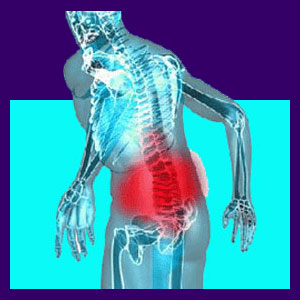
Facet syndrome symptoms do not always accompany diagnosed cases of facet degeneration. This is because most facet deterioration is normal and asymptomatic to a large degree. In essence, it is expected for people over 40 to show osteoarthritic activity in the spinal facet joints, but associated symptoms are the exception to the rule, rather than the norm.
Facet joint syndrome is the name of the condition which describes painful degeneration of the spinal zygapophysial joints. It is certainly possible to have discomfort due to purely structural deterioration of the joint structure. However, there can be many other explanations for back or neck pain symptoms which are not related to this process, despite physical evidence that facet degeneration exists. Statistics tell that many cases of facet syndrome are mistakenly linked to what amounts to typical spinal aging and not any pathological changes in the joints.
This narrative provides an objective look at the possible symptomatic expressions of facet joint arthropathy.
Symptoms of Facet Joint Syndrome
Below are listed some of the usual symptoms associated with true facet arthrosis. Some may be similar to other dorsal pain syndromes, making a positive diagnosis difficult to achieve. However, a few may be unique to facet joint expressions:
Back pain or neck pain may exist. Pain should be confined to the central spinal area in a specific spot and should not be variable in location or too severe. Pain may be worse upon movement of the region.
There may be a loss of range of motion and flexibility in the affected joints. The spine might feel stiff, tight and resistant to movement.
In cases where bone spurs might have the possibility to impinge on nerve roots, there may be neurological expressions, such as paresthesia in areas of the body served by the affected nerve.
Some patients experience popping or grinding sounds in a particular region of the spinal joints.
Facet Joint Disease Symptoms
The symptoms of facet joint disease can mimic symptoms of many other diagnoses. Therefore, it is impossible to diagnose facet syndrome from the symptoms alone.
There is also the possibility that the facet joint discomfort is actually being caused by another structural condition, such as general arthritis in the spine. In this case, facet syndrome is not the only source. Instead, it is merely a part of a larger degenerative problem. Of course, the deterioration of the facet joints may be purely coincidental to any pain which may be enacted by another spinal, nonspinal or even nonstructural condition. A great number of patients are misdiagnosed with facet arthritis as the primary cause of their suffering.
Facet Syndrome Symptoms Guidance
If you have been diagnosed with facet syndrome and are experiencing mild to moderate facet syndrome symptoms, there are many options for you to consider.
First, you need to be sure that the diagnostic conclusion is valid, since facet degeneration is indeed virtually universal and rarely problematic.
Next, you need to be sure of the exact reason for the pain. There are several possibilities why facet syndrome can hurt. Treatment options are case-specific, so the more you know, the better your chances for successful resolution of the symptoms with appropriate care.
Finally, once you understand the condition and feel confident in the diagnosis, you can talk to your doctor and examine all possible facet joint pain treatment options before deciding on the best course of action for your specific pain profile.




